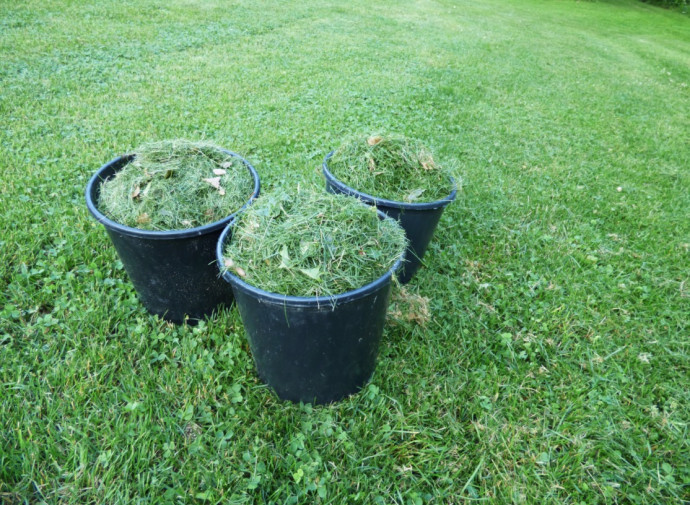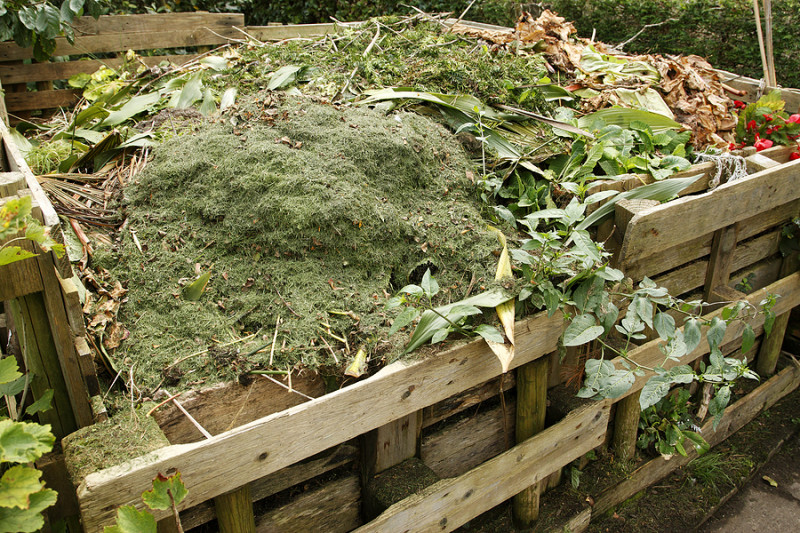Conquer the Art of Composting: Grass Clippings

Converting kitchen and garden waste into usable soil is what composting is all about. Food waste, grass clippings, weeds, small brush, coffee grounds, eggshells—all of these organic ingredients should go into your compost pile, not the landfill. When adding material to the composter, keep in mind the pile needs regular moisture and a proper ratio of carbon-rich materials, or “browns,” and nitrogen-rich materials, or “greens”.
Effective, efficient composting requires active participation on your part. Turn the pile regularly with a garden fork for quicker decomposition. Typically, it takes three to four weeks to create usable compost. If you add “hotter” items, which have a heavier nitrogen content, they can create a heated pile, then the compost can develop more quickly. The speed of compost creation is determined by what you add—maintain a good balance of moisture, carbon, and nitrogen—whether you chop up the ingredients before adding them, and how often you turn the pile.
The temperature of the managed pile is important—it indicates the activity of the decomposition process. It should be warm or hot to the touch. If it is not, then the microbial activity has slowed down, and you need to add more green materials. This heat can be encouraged if you place your compost pile in full sun.
Keeping the pile moist is also important: Organic waste needs water to decompose. Graywater, such as old dishwater or washing machine water, can be drained into a compost pile regularly.
The rule of thumb is to keep the pile as moist as a wrung-out sponge. If you actively manage the composting, within a few weeks, you will have a rich additive for your garden.

Create custom compost: grass clippings
Grass clippings make great compost, but they create a lot of heat due to nitrogen decomposition. This means that putting fresh grass-clipping compost on your garden is much like using fresh manure: it burns plants instead of helping them. So the clippings must rot first (and off-site) in order to be most effective.
One of the best ways to hack grass clippings as compost is to benefit your lawn by using a mulching lawnmower. These machines have specially designed decks and blades that temporarily contain clippings as the machine mows, allowing the mower blades to slice them into much smaller pieces. These clippings then drop directly onto the yard as mulch, where they give back nitrogen and other nutrients to the soil. If you are a regular lawn mower, and you keep your lawn cropped short, this technique is the easiest to manage. The benefits of using grass clippings on your lawn include lower levels of thatch and less pollution because compost reduces the need for fertilizers: approximately 50 percent of the lawn’s annual fertilizer needs are taken care of by the site-generated mulch. There also is no need for bagging or lawn raking.
When using a mulching mower, be sure to mow when the lawn is dry, so the grass does not stick to your blades. Remove no more than one-third of the grass height with each mowing, and if you must fertilize the lawn use organic fertilizers built specifically for grass.
A compost pile made exclusively from grass clippings can be challenging due to the intense heat created when the clippings are at their peak in the breakdown cycle. Often, the decomposing grass will turn smelly and slimy because of the heat and moisture. By turning frequently, the grass will dry without smell.
Start with grass clippings that have not been exposed to chemicals such as non-organic fertilizers, herbicides, or pesticides. So the clippings don’t become too matted or smelly, let them dry out for a couple of days before composting. Simply place the clippings in a pile and turn daily. Once dried, mix into your regular compost pile or create a mixture of 2 parts dry leaves and 1 part dry grass clippings. Place this grass/leaf mix in a well-aerated wire cage or a composter that lets a lot of air in and stir well. Keep slightly moist once mixed and turn weekly for the best results.
